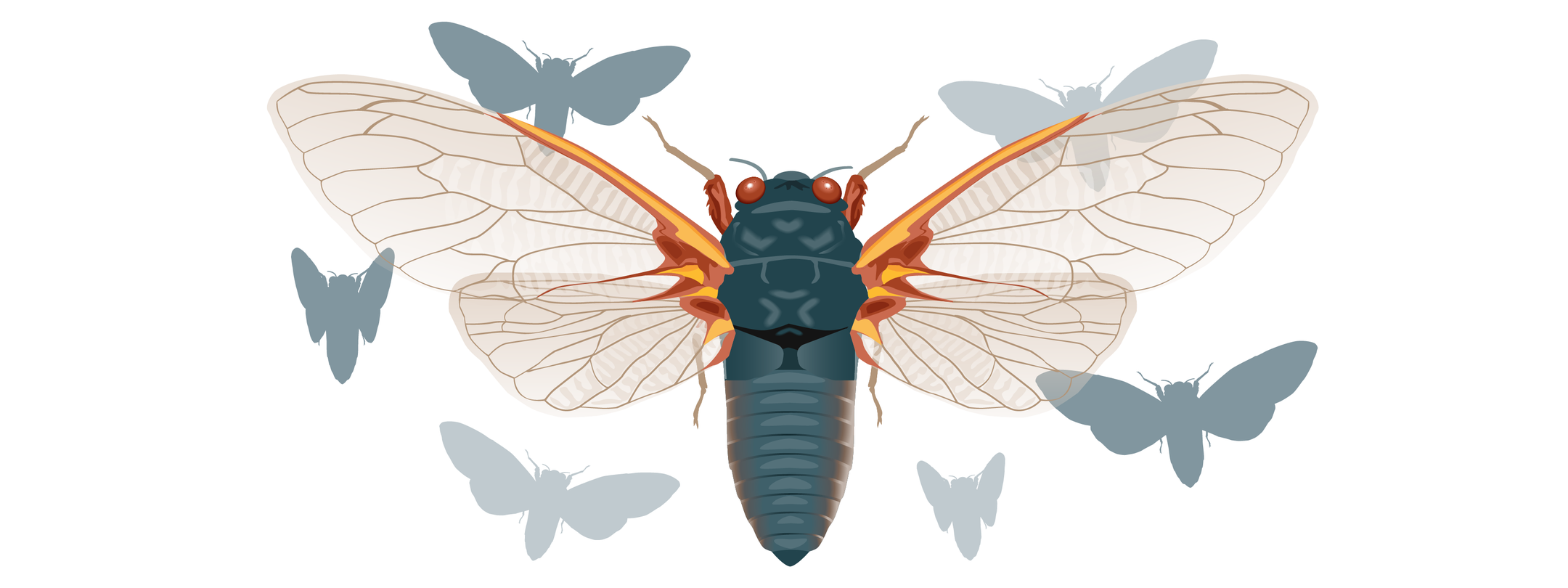
Billions of Brood X cicadas emerged from their 17-year slumber last year, but don't be surprised to see a few stragglers cropping up this month.
It's not uncommon for a small number of Brood X cicadas to emerge after 18 years, says Gene Kritsky, a professor of entomology and cicada expert at Mount St. Joseph University in Cincinnati.
But why are they coming out now? The emergence depends on the right soil temperature. Southern states are usually the first to reach the critical temperature of 65 degrees Fahrenheit.
"It's not unusual to have a few of these late arrivals," Kritsky says.
The first cicadas may have started emerging in late April and early May in some areas. By mid-May, they could appear in southern Indiana, Ohio and Maryland and a week later in northern Indiana, Pennsylvania and New Jersey.
Anatomy of a periodical cicada
Unlike greenish, annual cicadas, periodical cicadas are known for their black bodies, clear wings and bold red eyes. They breathe through 10 pairs of respiratory openings called spiracles, two on the thorax, eight on the abdomen. The antennae are short and bristly.
What states could see cicadas emerge?
Brood X is one of the largest and most broadly distributed groups of periodical cicadas. They can be found from northern Georgia to New York, west to the Mississippi River and in the Midwest. There can be as many as 1.5 million cicadas per acre, which brings the brood population into the trillions.
Brood X map
How long will cicadas be around?
It depends on the weather and latitude in the U.S. Brood X cicadas usually emerge in late April and early May.
If the weather is consistently warm and dry, the cicadas will finish mating sooner rather than later, which would mean a shorter season. Their lifespan is four to six weeks and will they will start to die off starting in late June into July.
Are cicadas and locusts the same thing?
No, they are different species of insects. Locusts belong to the same family as grasshoppers and are far more destructive because they feed on a variety of plant life. Large swarms of locusts can cause severe damage to croplands.
Cicadas don't cause the same level of destruction as locusts. Although large swarms of cicadas can damage young trees as they lay their eggs in branches, larger trees can usually withstand the cicadas.
Do cicadas bite or sting?
No. Cicadas aren't equipped to sting like bees or wasps. They do have prickly feet that could prick your skin if held.
What is the life cycle of a cicada?
The cicada has the longest life cycle of any insect. Periodical cicadas from Brood X have lived underground in wingless nymph form since 2004, about a foot or two from the surface, feeding on sap from tree roots.
Once they're mature, the brood will emerge, where they'll spend two to four weeks in late May and early June courting, mating, flying, driving people crazy and being eaten by everything. The adults will then lay their eggs in trees, which will hatch four to six weeks later.
How big are the Brood X cicadas?
They’re 1 to 2 inches long with a wingspan of 3 to 4 inches.
Sounds of the cicada
Periodical cicadas are known for their earsplitting sounds, which are produced by the male of the species to attract females.
How loud do cicadas get?
Male cicadas contract ridged membranes on their abdomens to make the sound, which is amplified by their almost-hollow abdomens. Each species has its own sound, and the chorus can reach 90 to 100 decibels – as loud as a lawn mower, CicadaMania says.
When will the cicadas come back?
There are at least 15 separate cycles, or "broods," of periodic cicadas in the U.S. Some emerge every 17 years, while others come out every 13 years. More than one type of brood may emerge in some areas at the same time because of staggered development, according to the U.S. Department of Agriculture. Some species show up every summer. Brood X cicadas will next emerge in 2038.
Read more: Brood X is coming: Billions of cicadas set to swarm parts of 15 states, DC in just a few weeks
SOURCE The University of Michigan Museum of Zoology; Entomological Society of America; National Audubon Society "Amazing Bugs" by Inside DK Guides and USA TODAY research
Contributing: Emily DeLetter, Cincinnati Enquirer, N'dea Yancey-Bragg and Karina Zaiets, USA TODAY; Keith Matheny and Georgea Kovanis, Detroit Free Press